Game: Quake
Release Date: August 19, 2021
Price: $9.99
Rating: Mature
Platform: Switch, PC, Playstation 4, Xbox One
It’s always a pleasant surprise when a game for which you had limited expectations appears seemingly out of nowhere and ends up shattering them. That might seem like a strange statement to make about one of the most critically acclaimed and consequential releases in the history of video games. In my case, it’s literally true.
A Piece of History
The announcement of a remaster of the 1996 classic Quake, handled by Night Dive Studios, coincided with its August 19th launch across all platforms. Having never played even a single second of Quake or its sequels, I was drawn into picking it up from the Nintendo eShop chiefly for the following reasons: First, as mentioned, it’s an important piece of gaming history, being one of the first action games ever developed to feature fully-rendered 3D environments. It went on to have a profound impact on the first-person shooter genre. Secondly, I love myself a good FPS! Some of the best experiences that I’ve had on the Nintendo Switch were in playing (for the first time, believe it or not) games like Doom 3, the Bioshock trilogy, and two very fine Metro shooters. Thirdly, Quake only retails for a cool $9.99! How can you beat that?
There was one point of hesitation in buying Quake.
The Hesitancy
If there is a common thread tying together the other FPSs that I mentioned, apart from their being, well, first-person shooters, it’s that they all lean heavily into spine-chilling, survival-horror–like environments. Though less true of Bioshock: Infinite, each of these FPSs focuses as much on gunplay as on creating an uncomfortable setting, inclining players (or me, at any rate) to tippy-toe around corners. Keeping your gun fully loaded and your sights aimed and ready at the next inevitable ‘jump scare’—probably hiding behind that door—is half of the thrill. Doom 3 is especially adept at instilling this sense of unease and sheer terror. I ate up every second of it.
Doom 3 is also considered by many to be the ‘black sheep' of the Doom series. It forwent the frenzied, mindless, run-and-gun action that made other Doom entries so beloved. I only played the original Doom briefly, back on the Game Boy Advance in the early aughts. Although it’s undoubtedly an inferior version, it defined my sentiments about first-person shoot ‘em ups which remained true until Quake: I thought I didn’t much care for them when compared to slower-paced shooters, especially those that emphasized atmosphere and a kind of, say, psychological experience. That’s not to suggest I never found myself enjoying them. I’ve had countless fun multiplayer escapades with some of the older Halo and Call of Duty games. When it came to the single-player campaigns in these sorts of FPSs, however, I wasn't left with many outstanding memories.
Enter id Software
It’s perhaps fitting then that an id Software game—the developers of Wolfenstein 3D, the Doom series, and Quake—would come along and drastically change my perception about run-and-gun shooters now. With a game that launched when I was only eight years old, a time in which I probably would've thought ‘FPS' was the name of some sort of futuristic, racing game. Why did I find this to be the case with Quake specifically? How does it hold up (even as a remaster) twenty-five years(!) after its debut?
Read on to find out!
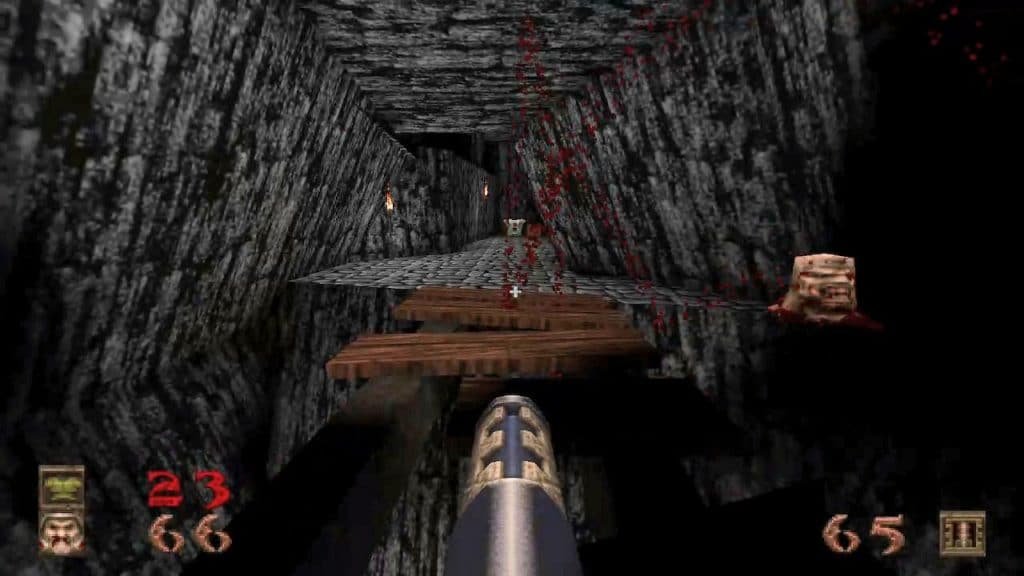
Narrative and Layout
There is minimal backstory in Quake, with a dozen lines or so of text that accompany the completion of each of the game’s four episodes. Believe me when I say that the narrative isn’t important here. From what I gathered, you’re an unnamed soldier living in a dystopian future. In this era, scientists have developed teleportation devices known as ‘Slipgates,’ allowing instantaneous travel between various locations. A mysterious entity called ‘Quake’ has also found its way through one of the Slipgates and unleashed a horde of inter-dimensional monsters upon humanity. These blood-thirsty spawns of the otherworld appear to have ascended from the gates of Hell itself.
Your objective: Defend the human race as you battle your way through military installations, gothic fortresses, submerged corridors, crypts of undead, and lava-filled caverns, seeking mysterious ‘Runes’ required to face off against the ultimate ruler behind the recent demonic invasion.
Each of the game’s four episodes consists of roughly seven ‘levels,’ sprawling labyrinths that usually involve finding both a silver and a gold key to proceed to the next level. These dangerous complexes contain numerous secret rooms and even more hazards to your health, sometimes booby traps in addition to unrelenting brutes. A level typically takes anywhere from ten to thirty minutes to finish, making Quake an ideal game to consume in spurts. There is also a very handy ‘Quick Load'/'Quick Save' feature that goes a long way towards this ease of accessibility.
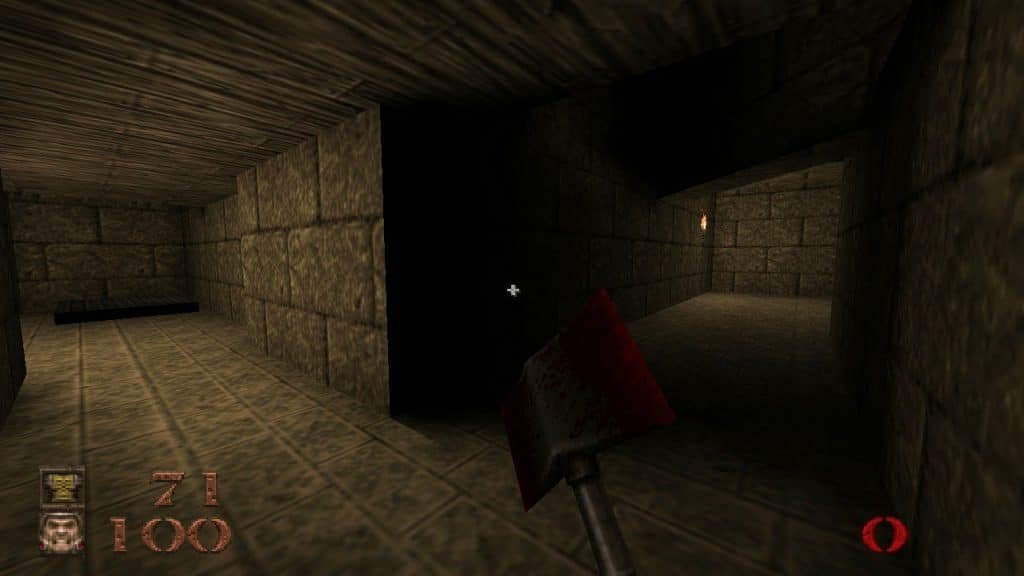
Gameplay
Quake’s gunplay isn’t much more complicated than its storyline. Throughout the different episodes, the protagonist always possesses an axe (should one find themselves in the unfortunate situation that they have run out of ammo) and can acquire four different weapon types along the way. A few modifications can also be obtained for each.
Advancing through Quake's levels, taking down room after room of enemy mobs, is something of a tango. The limited variety of savage fiends seeking your demise are persistent in their blistering array of melee and projectile assaults. I played on Quake’s ‘Normal’ difficulty setting rather than its more punishing ‘Hard’ and ‘Nightmare’ modes. Given as much, each level was fairly liberal in the amount of health and ammo discoverable throughout. While those with a hair-trigger temperament are never discouraged from charging into danger with guns blazing, the affair will go a bit smoother if you utilize your shotgun, grenade launcher, or any other death machine in your arsenal, against specific targets. Also, know when to retreat and always keep moving! The latter will come naturally as the real jolt of adrenaline derived from Quake’s basic gameplay loop is in the speed of its combat.
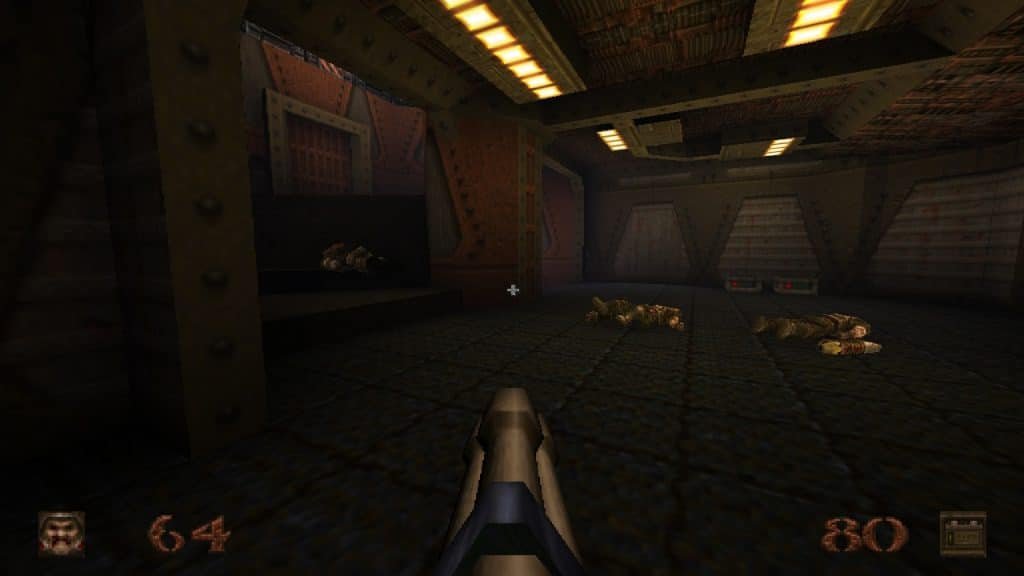
Everything moves very fast in Quake. Even jumping back into your save file is attractively quick. With almost no loading times, it literally takes a measly 30 seconds to return to the hellish action after clicking the Quake icon on your Switch Home screen. Then there’s the gameplay itself. For the first several hours, I actually had to turn the default ‘Always Run’ setting off, opting for my character’s gait to be more of a casual jog. However, once you can adjust to it, Quake’s frantic tempo really starts to feel second nature and a pure blast.
Aesthetic and Soundtrack
Graphically, Quake is what you’d expect from a remaster of a twenty-five-year-old game. My initial impression was that Quake represented what I’d imagine the end result to be if someone built a first-person shooter using Minecraft assets. Albeit less blocky! That’s not to say Quake looks bad. Night Dive Studios did a superb job of smoothing out textures. The environments, which are obviously a product of their age, sport a clean, modernized look.
And quite frankly, given how brilliantly designed and atmospheric many of the levels are, its outdated visuals were easy for me to ignore. After a few gaming sessions, I was fully sold on its world.
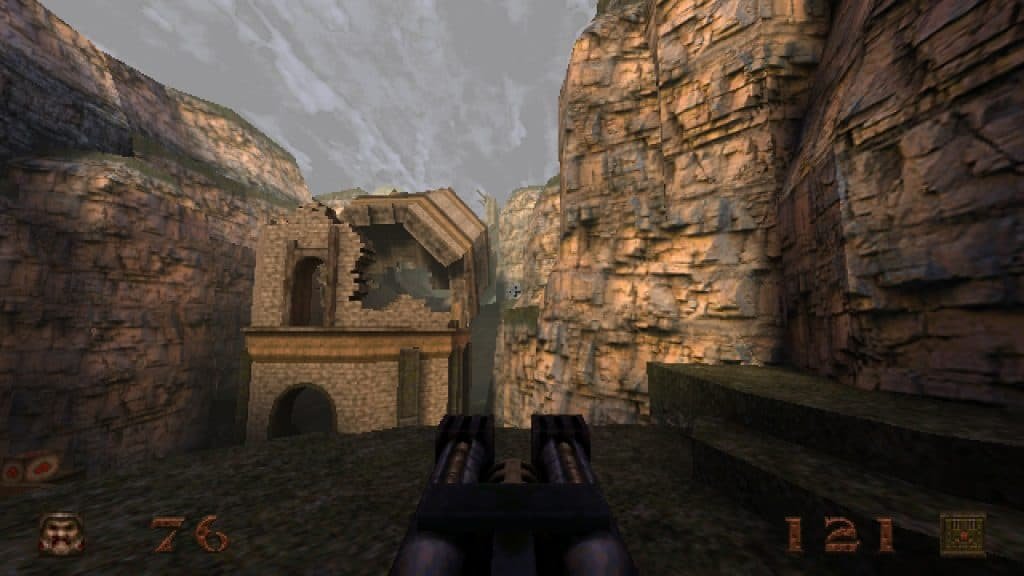
Nine Inch Nail’s Trent Reznor collaborated with id Software to compose the soundtrack for Quake’s base game. I’ve never had an opinion on Reznor’s work either way, whether with NIN or the movies he has scored. His efforts on Quake result in background music that is suitably dark, moody, and ambient. It nicely compliments the unsettling vibes that each map presents with its dim surroundings, diabolical antagonists, and creepy imagery. That said, no single one of the game’s tunes really leaped out at me until I began playing through Quake’s expansion levels. These were in large part composed by Jeehun Hwang and contain more of an upbeat, grand, orchestral sound, driven by electric guitars. Although I found myself especially jamming out to Hwang’s contributions, overall Quake’s bleak and tense soundtrack is solid and one that I’m sure to occasionally revisit.
Performance
Performance-wise, I have almost nothing bad to say about Quake. In terms of how it runs on the Nintendo Switch, I’ve read complaints from people who said they encountered frame rate dips at different points. Maybe I’m just extremely insensitive but I spent a majority of my time playing Quake in handheld mode and never once encountered any problems. I didn’t mess too much with the display settings, which offer a ton of customization options. I set everything at what I thought would offer the maximal experience: resolution on high, texture smoothing turned on, antialiasing turned off, etc. Again, I didn’t notice any hiccups on the technical side of things.

The couple of issues that I did meet along my quest to conquer Quake were the occasional bug. One of these seemed unfixed from the game’s PC days per comments I came across online when looking into it. The two occasions in specific involved an enemy known as a ‘Fiend’ getting halfway stuck in a ceiling (lucky for me). The other was of an abhorrent, Yeti-like monstrosity called a ‘Shambler’ refusing to spawn in one level’s final room. It prevented me from completing the map, forcing me to restart at the beginning. This was very unlucky for me but thankfully it wasn’t too much of a headache; fighting my way back to that location only cost me an extra 10-15 minutes.
That’s Not All!
Aside from Quake’s single-player campaign, the game offers split-screen local co-op and versus modes with up to four players, as well as online co-op and 8-player deathmatches. And it’s cross-platform! I spent a very limited amount of time battling online against people across the world and even less in local split-screen play. Regardless, it’s an awesome feature to include should I ever feel like testing my skills against other players. Finding a match seemed quick and effortless. Winning a match, not so much!
That’s not all! When I finished Quake’s campaign, after somewhere shy of 10 hours, I was left a little unsatisfied. Its gameplay had grown on me immensely. Just as I felt myself becoming increasingly addicted to the thrill of sending monster parts flying in all directions with rocket blasts, it was all over.
Or so I stupidly thought.
Oh So Much More
You see, I had missed the memo that Quake includes not only the entirety of Quake 64 but also four, full-game-sized expansions! Quake 64 is more or less the same as the main game with some minor tweaks to visuals and subject matter made to accommodate the Nintendo 64 hardware. Two of the expansions that are included, Scourge of Armagon and Dissolution of Eternity, were originally released by id Software in 1997. Dissolution of the Past was developed by MachineGames for Quake’s 20th anniversary back in 2016. Dissolution of the Machine is a wholly new campaign made by the same company for this latest Quake re-release.
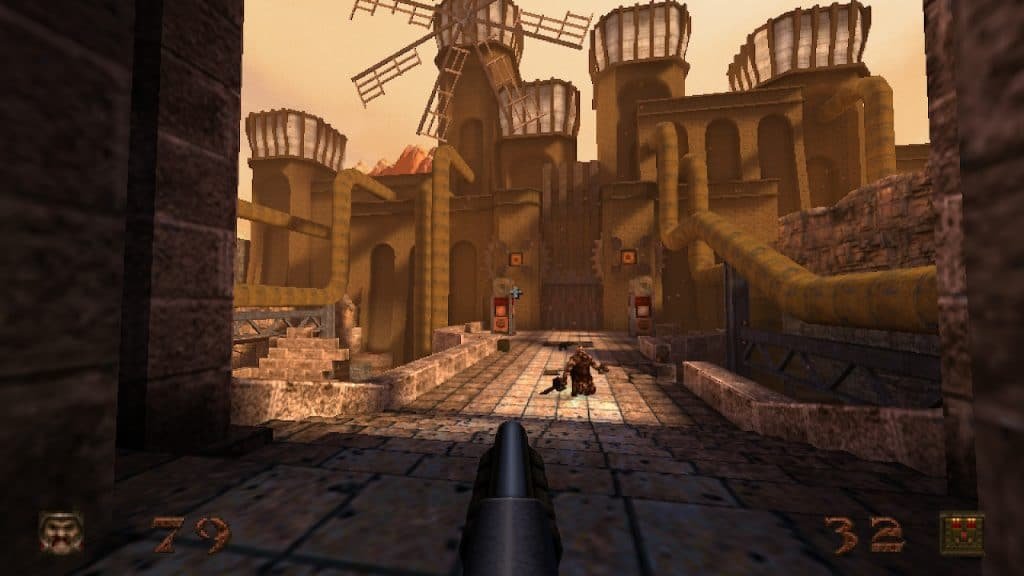
It’s a mind-boggling amount of content for a game that retails at $10. Not only did I get another 25 hours of playtime from the expansion episodes, but these aren’t simply filler either. In fact, with the exception of Dissolution of the Past, I’d go so far as to say that, with the additional weapon mods, enemies, and greater variance in each new area’s scenery, I enjoyed the bonus content even more than the base game.
Overall Impressions
From everything I’ve henceforth written it should be clear that I can easily and highly recommend Quake to anyone who enjoys a good ol’ FPS. I came into this remaster with zero feelings of nostalgia that could potentially affect my judgment. And I can definitively declare: Quake holds up incredibly well. The only question that might remain is, if I loved it so much, why not a perfect score?
Simply put, I have to reserve that award for games that truly blow me away on multiple fronts. Quake is exceedingly fun but there are some areas where it lacks the advantage of modern FPSs. As well-designed as its levels are, they are from a time when 3D modeling was still at a primitive stage and it shows. The absence of a substantial story may be largely inconsequential here but it’s still missing. There isn’t much diversity in terms of weapon or enemy types, and as gratifying as Quake remains, the single-track gameplay loop does sometimes begin to feel a bit repetitive. Enemy A.I. is also downright unsophisticated (although being able to turn foes against one another is a delightfully bright spot).
In a word, these aren’t really meant to be taken as major criticisms of Quake. Rather, they merely highlight why I think Quake is, while a great game by 2021 standards, not a perfect one. It was, however, enough to completely overhaul my opinion about run-and-gun shooters. That’s saying something.
Or, if that doesn’t convey the game’s impact on me personally enough: my physical copy of Doom Slayers Collection should be arriving in the mail sometime this week. As geeks are prone to say to other geeks these days…
‘Let’s GOOOOO!’
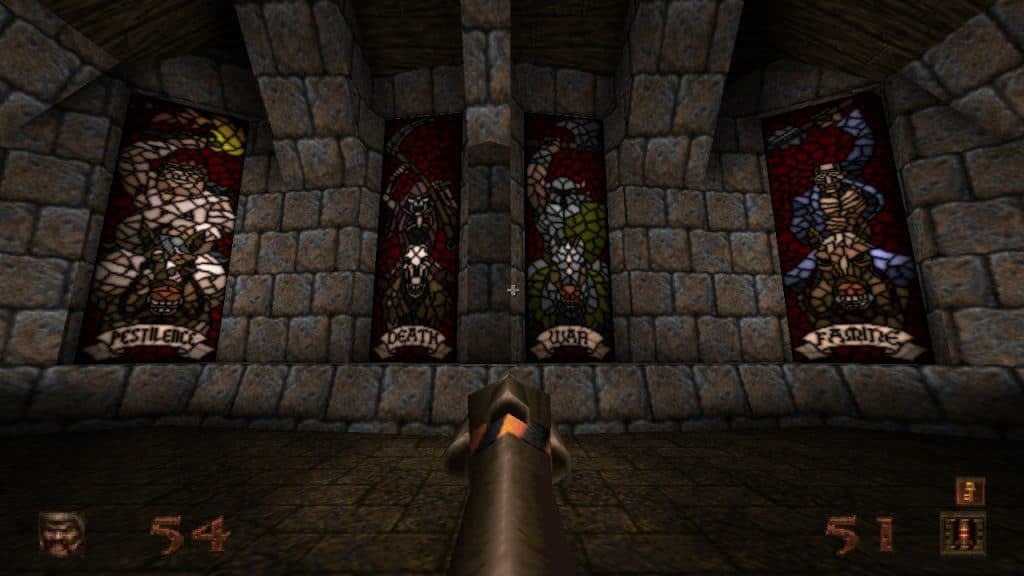

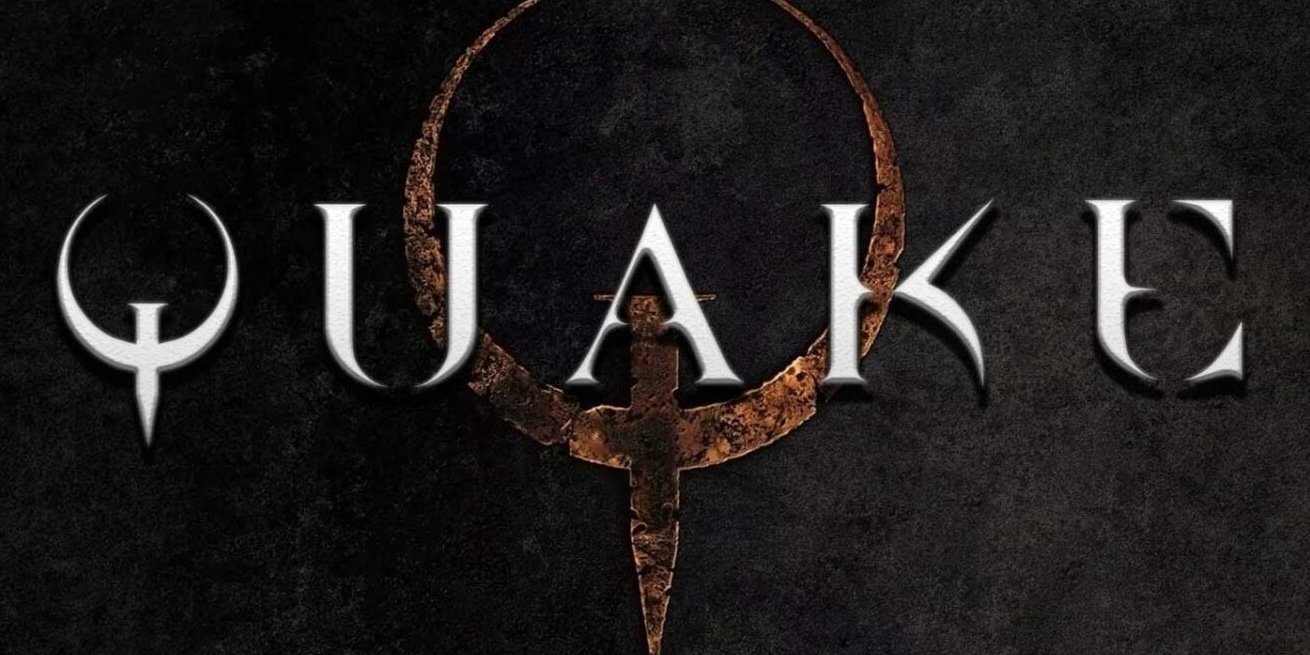
I love the look of these games from mid-2000s with high-contrast lighting. I’ve recently replayed FEAR and for a 10-year-old game, it looks fantastic. I’d even say that at times, it’s visually more stunning than some of today’s games, because the devs didn’t just throw a bunch of particle effects and lens flares at the screen (“cough” Battlefield 4 “cough”), but used the possibilities of then advanced engines to build atmosphere and create unique images. Chaos Theory still looks better than Blacklist. Who gives a shit if it’s not realistic, as long as it’s beautiful.